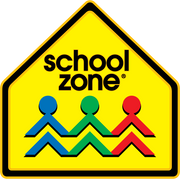A comfy beach chair, a cold beverage, a good book, and toes in the sand—it's a summertime happy place for many grown-ups.
Put book time on the calendar
That relaxing shoreline scene is a nice thought, but the reality for moms and dads?Between supervising water activities and keeping kids fed and hydrated, there isn't usually much time to read at the beach. And the littles usually want to be doing other things in sand and water. But designating some quiet time for kids to read—really read—first thing in the morning, in the heat of the day, or before bedtime will pay off big in so many ways.

In May, this blog also talked about the importance of keeping kids reading over the summer, along with some suggestions for making that happen. Like play dates and dentist appointments, reading time is more likely to happen if it's planned and scheduled, at least until it becomes habit. (It can take a month or more to establish a habit!)

Sheila Razdan, MD, MPH, writing for Healthy Children, last year compiled "10 Tips to Help Your Child Fall in Love with Reading." One of them is to create a reading nook. Razdan says, "A cozy, snuggle-friendly area in your home can be turned into the family 'reading zone.'" She further suggests "Just add blankets, pillows, a bean bag chair, and a window or lamp!"
Two of her other tips are to "keep books around" and "travel with reading material."
Show 'em how it's done
Once you've designated a reading time and place, try joining your kids.
Like so many other things they learn, having you be their role model is important. In February, the United Through Reading website posted "Cultivating Curious Minds: Seven Ways to Model Good Reading Habits for Children." It says, "Children are observant. They absorb the behaviors and attitudes they witness around them. When they see the important people in their lives prioritize reading for enjoyment, it sends a powerful message: 'Reading is valuable, engaging, and something worth devoting time to.'"

Two of their tips are "Talk about your reading" and "Make reading a shared experience." The article also urges, "Don't be afraid to get silly! Read funny books in silly voices and act out scenes. Laughter and joy are powerful motivators!"
Similarly, in 2022 Reading Partners published "The Importance of a Parent/Guardian's Role in Their Child's Literacy: Resources and Tips," which says, "Children who hear their parents and others reading aloud have larger vocabularies. These kids understand the world better and think more clearly."
It also says that "Reading regularly with your child can help build discipline and concentration and create a great shared experience."
Choose the real and the imaginary

Reading both fiction and non-fiction is important. In April, for the National Education Association magazine NEA Today, Cindy Long interviewed "non-fiction author and champion Melissa Stewart" who said, "We're in a golden age of nonfiction, and offerings have never been so vibrant and vital."
School Zone's Preschool and Kindergarten Full Learning Programs, which offer a full year of learning, each include fiction and non-fiction books. In the Preschool Full Learning Program the non-fiction titles are What Grows on Trees and Big Cats. Fiction titles are The Good Bad Cat and Charlie Digs. In the Kindergarten Full Learning Program the non-fiction titles are All About Bears and Underwater and the fiction titles are The New Bike and Charlie Hides.
For lots of great ideas, the Association for Library Service to Children (ALSC) compiled 2024 Summer Reading Lists arranged by birth-preschool, K-2, 3-5, and 6-8. Two on the K-2 list are Animals in Pants: A Poetry Picture Book by Suzy Levinson and illustrated by Kristen Howdeshell and Kevin Howdeshell and Finding Family: The Duckling Raised by Loons by Laura Purdie Salas and illustrated by Alexandra Neonakis.
Two on the 3-5 list are The Book of Turtles by Sy Montgomery and illustrated by Matt Patterson and Glitter Everywhere! Where It Came From, Where It's Found and Where It's Going by Chris Barton and illustrated by Chaaya Prabha.
All four titles were released last year.
Study after study shows lifetime benefits of frequent reading. It expands vocabulary, all-around language and communication skills, empathy. emotional awareness, critical thinking, worldview, creativity. imagination, and more.

And how about this: The We Are Teachers website, in "25 Surprising Benefits of Reading (Plus Lots of Our Favorite Books)," reports that "Reading for just six minutes can reduce stress levels by 68%."
So many wins—for you and your kids!












